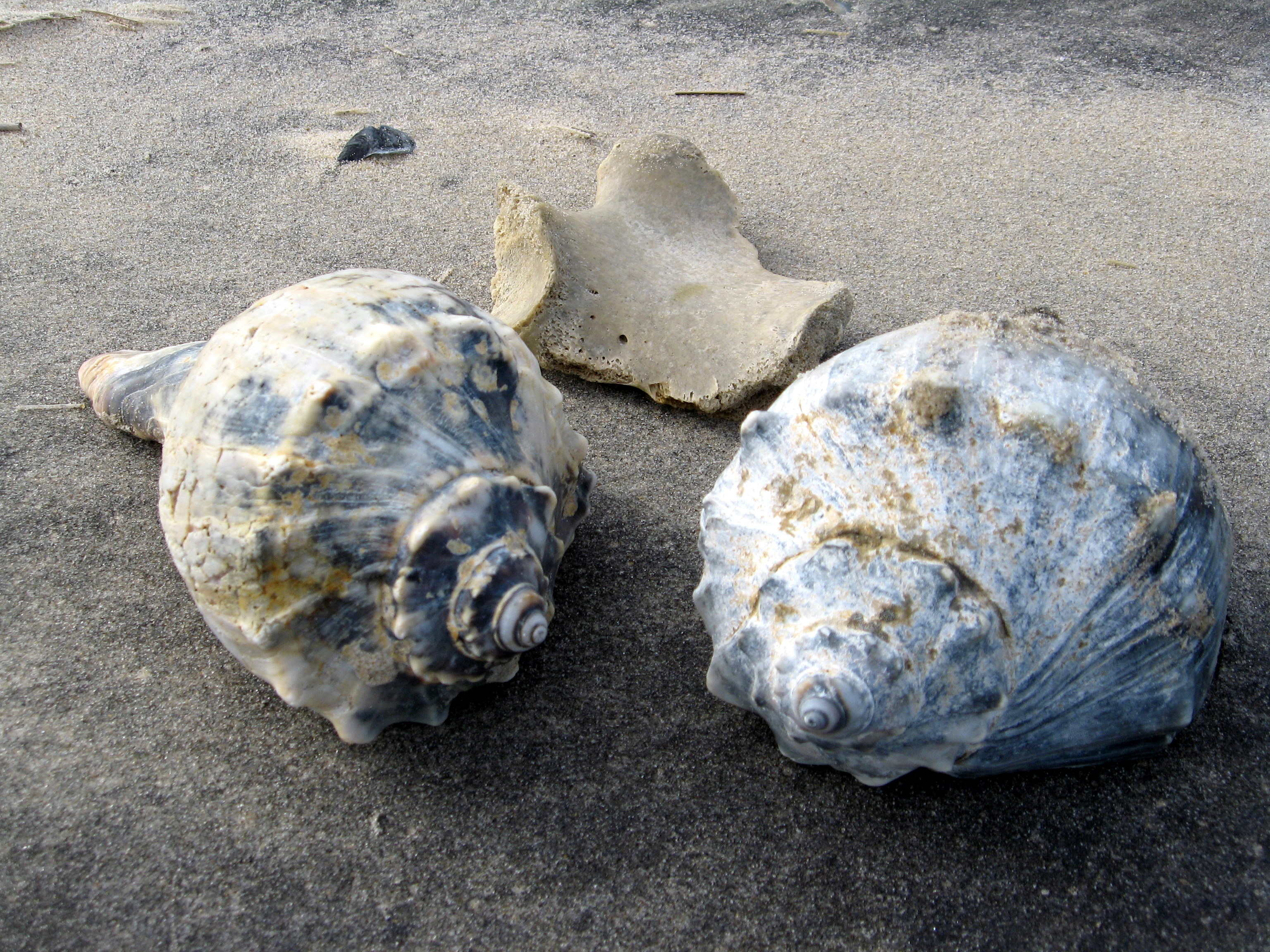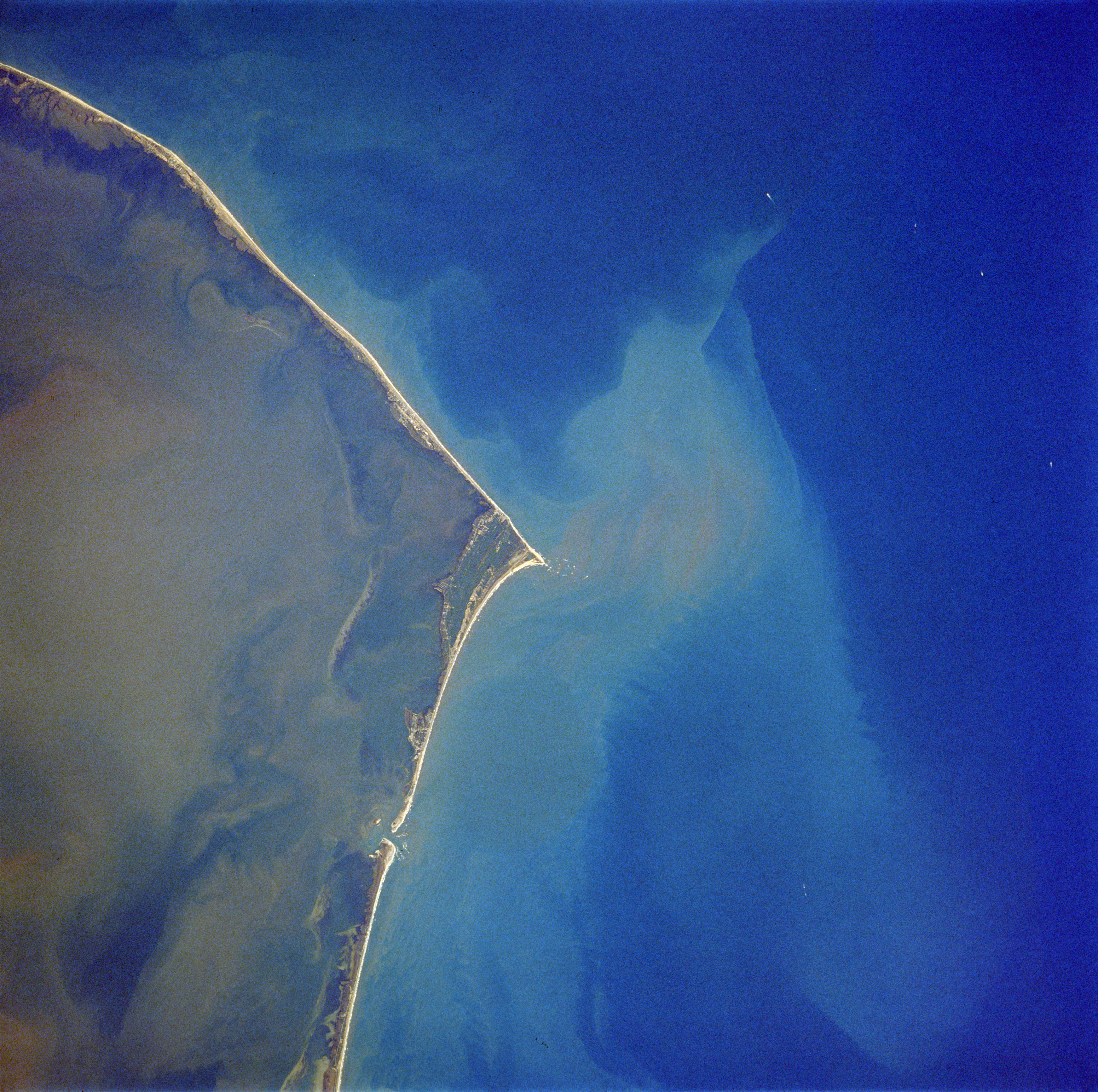|
Sinistrofulgur
''Sinistrofulgur'' is a genus of large sea snails with left-handed shell-coiling, marine gastropod mollusks in the subfamily In biological classification, a subfamily (Latin: ', plural ') is an auxiliary (intermediate) taxonomic rank, next below family but more inclusive than genus. Standard nomenclature rules end botanical subfamily names with "-oideae", and zo ... Busyconinae. Taxonomy The taxonomy of sinistral busyconids has been subject to several disputes, including at what rank to recognize them as distinct from their sister taxon, '' Busycon carica'', and how many species are represented. Sinistral busyconids were historically included in the genus ''Busycon''. In 1958, Hollister proposed the subgenus ''Sinistrofulgur'' for the group. Petuch elevated ''Sinistrofulgur'' to genus rank in 1994, although some other authors have continued including these snails in the genus ''Busycon''. Sinistral busyconids were historically included in the species ''Busycon contra ... [...More Info...] [...Related Items...] OR: [Wikipedia] [Google] [Baidu] |
Busycon
''Busycon'' is a genus of very large edible sea snails in the subfamily Busyconinae. These snails are commonly known in the United States as ''whelks'' or ''Busycon whelks''. Less commonly they are loosely, and somewhat misleadingly, called "conchs".Bouchet, P. (2015). Busycon Röding, 1798. In: MolluscaBase (2015). Accessed through: World Register of Marine Species at http://www.marinespecies.org/aphia.php?p=taxdetails&id=160183 on 2015-12-03 ''Busycon'' comes from the Greek ''bousykon'' meaning ''large fig'', from ''bous'' meaning ''cow'' and ''sykon'' meaning '' fig''. Shell description Shells of species in this genus can grow to a length of 40 cm. The shell is pyriform. The body whorl is large, nodulous or spinose. The spire is very short. The aperture is large and subtriangular. The siphonal canal is open, elongated, entire at the fore part. The inner lip is concave, with a single fold anteriorly. The outer lip is internally striated. The shells are generally a solid ... [...More Info...] [...Related Items...] OR: [Wikipedia] [Google] [Baidu] |
Sinistrofulgur Contrarium
''Sinistrofulgur contrarium'' is a fossil snail species of the busycon whelks in the family Busyconidae. There has been some confusion about the correct taxonomy of this species, which has been confused with the extant species '' Sinistrofulgur sinistrum'' Hollister, 1958, and ''Sinistrofulgur perversum'' (Linnaeus, 1758)J. Wise, M. G. Harasewych, R. T. Dillon Jr. (2004). Population divergence in the sinistral whelks of North America, with special reference to the east Florida ecotone (PDF; 673 kB)''. Marine Biology 145, pp. 1167–1179. Description Shell size of this operculated sinistral species 170 mm. Distribution In muddy sand with sea-grass: Sanibel Island, Florida Florida ( ; ) is a U.S. state, state in the Southeastern United States, Southeastern region of the United States. It borders the Gulf of Mexico to the west, Alabama to the northwest, Georgia (U.S. state), Georgia to the north, the Atlantic .... References {{Taxonbar, from=Q884531 contrarium ... [...More Info...] [...Related Items...] OR: [Wikipedia] [Google] [Baidu] |
Busyconinae
The Busyconinae are taxonomic subfamily of large sea snails, often known as whelk Whelks are any of several carnivorous sea snail species with a swirling, tapered shell. Many are eaten by humans, such as the common whelk of the North Atlantic. Most whelks belong to the family Buccinidae and are known as "true whelks." Othe ...s. The name "whelk" also refers to Buccinidae. Busyconinae consists of Recent and fossil species.Bouchet, P. (2015). Busyconinae Wade, 1917 (1867). In: MolluscaBase (2015). Accessed through: World Register of Marine Species at http://www.marinespecies.org/aphia.php?p=taxdetails&id=862828 on 2015-12-03 Genera * † '' Brachysycon'' Petuch, 1994 * '' Busycoarctum'' Hollister, 1958 * '' Busycon'' Röding, 1798 ** Tribe ''Busyconini'' Wade, 1917 ** Tribe ''Busycotypini'' Petuch, 1994 * † '' Coronafulgur'' Petuch, 2004 * † '' Laevisycon'' Petuch, R.F. Myers & Berschauer, 2015 * '' Lindafulgur'' Petuch, 2004 * † '' Pyruella'' Petuch, 1982 * '' ... [...More Info...] [...Related Items...] OR: [Wikipedia] [Google] [Baidu] |
Genus
Genus (; : genera ) is a taxonomic rank above species and below family (taxonomy), family as used in the biological classification of extant taxon, living and fossil organisms as well as Virus classification#ICTV classification, viruses. In binomial nomenclature, the genus name forms the first part of the binomial species name for each species within the genus. :E.g. ''Panthera leo'' (lion) and ''Panthera onca'' (jaguar) are two species within the genus ''Panthera''. ''Panthera'' is a genus within the family Felidae. The composition of a genus is determined by taxonomy (biology), taxonomists. The standards for genus classification are not strictly codified, so different authorities often produce different classifications for genera. There are some general practices used, however, including the idea that a newly defined genus should fulfill these three criteria to be descriptively useful: # monophyly – all descendants of an ancestral taxon are grouped together (i.e. Phylogeneti ... [...More Info...] [...Related Items...] OR: [Wikipedia] [Google] [Baidu] |
Sea Snail
Sea snails are slow-moving marine (ocean), marine gastropod Mollusca, molluscs, usually with visible external shells, such as whelk or abalone. They share the Taxonomic classification, taxonomic class Gastropoda with slugs, which are distinguished from snails primarily by the absence of a visible Gastropod shell, shell. Definition Determining whether some gastropods should be called sea snails is not always easy. Some species that live in brackish water (such as certain Neritidae, neritids) can be listed as either freshwater snails or marine snails, and some species that live at or just above the high tide level (for example, species in the genus ''Truncatella (gastropod), Truncatella'') are sometimes considered to be sea snails and sometimes listed as land snails. Anatomy Sea snails are a very large and diverse group of animals. Most snails that live in salt water respire using a gill or gills; a few species, though, have a lung, are intertidal, and are active only at low tide w ... [...More Info...] [...Related Items...] OR: [Wikipedia] [Google] [Baidu] |
Marine (ocean)
The ocean is the body of salt water that covers approximately 70.8% of Earth. The ocean is conventionally divided into large bodies of water, which are also referred to as ''oceans'' (the Pacific, Atlantic, Indian, Antarctic/Southern, and Arctic Ocean),"Ocean." ''Merriam-Webster.com Dictionary'', Merriam-Webster, https://www.merriam-webster.com/dictionary/ocean . Accessed March 14, 2021. and are themselves mostly divided into seas, gulfs and subsequent bodies of water. The ocean contains 97% of [...More Info...] [...Related Items...] OR: [Wikipedia] [Google] [Baidu] |
Gastropod
Gastropods (), commonly known as slugs and snails, belong to a large Taxonomy (biology), taxonomic class of invertebrates within the phylum Mollusca called Gastropoda (). This class comprises snails and slugs from saltwater, freshwater, and from the land. There are many thousands of species of sea snails and sea slug, slugs, as well as freshwater snails, freshwater limpets, land snails and slugs. The class Gastropoda is a diverse and highly successful class of mollusks within the phylum Mollusca. It contains a vast total of named species, second only to the insects in overall number. The fossil history of this class goes back to the Furongian, Late Cambrian. , 721 family (taxonomy), families of gastropods are known, of which 245 are extinct and appear only in the fossil record, while 476 are currently neontology, extant living fossil, with or without a fossil record. Gastropoda (previously known as univalves and sometimes spelled "Gasteropoda") are a major part of the phylum Mo ... [...More Info...] [...Related Items...] OR: [Wikipedia] [Google] [Baidu] |
Mollusk
Mollusca is a phylum of protostomic invertebrate animals, whose members are known as molluscs or mollusks (). Around 76,000 extant species of molluscs are recognized, making it the second-largest animal phylum after Arthropoda. The number of additional fossil species is estimated between 60,000 and 100,000, and the proportion of undescribed species is very high. Many taxa remain poorly studied. Molluscs are the largest marine phylum, comprising about 23% of all the named marine organisms. They are highly diverse, not just in size and anatomical structure, but also in behaviour and habitat, as numerous groups are freshwater and even terrestrial species. The phylum is typically divided into 7 or 8 taxonomic classes, of which two are entirely extinct. Cephalopod molluscs, such as squid, cuttlefish, and octopuses, are among the most neurologically advanced of all invertebrates—and either the giant squid or the colossal squid is the largest known extant i ... [...More Info...] [...Related Items...] OR: [Wikipedia] [Google] [Baidu] |
Subfamily (biology)
In biological classification, a subfamily (Latin: ', plural ') is an auxiliary (intermediate) taxonomic rank, next below family but more inclusive than genus. Standard nomenclature rules end botanical subfamily names with "-oideae", and zoological subfamily names with "-inae". Detarioideae is an example of a botanical subfamily. Detarioideae is a subdivision of the family Fabaceae (legumes), containing 84 genera. Stevardiinae is an example of a zoological subfamily. Stevardiinae is a large subdivision of the family Characidae, a diverse clade of freshwater fish. See also * International Code of Nomenclature for algae, fungi, and plants * International Code of Zoological Nomenclature The International Code of Zoological Nomenclature (ICZN) is a widely accepted Convention (norm), convention in zoology that rules the formal scientific name, scientific naming of organisms treated as animals. It is also informally known as the I ... * Rank (botany) * Rank (zoology) R ... [...More Info...] [...Related Items...] OR: [Wikipedia] [Google] [Baidu] |
Busycon Carica
The knobbed whelk (''Busycon carica'') is a species of very large predatory sea snail, or in the US, a whelk, a marine gastropod mollusk in the family Busyconidae, the busycon whelks. The knobbed whelk is the second largest species of busycon whelk, ranging in size up to 12 in (305 mm). Distribution Knobbed whelks are native to the North Atlantic coast of North America from Cape Cod, Massachusetts to northern Florida. This species is common along the Georgia coast. It is the state shell of New Jersey and Georgia. Shell description The shell of most knobbed whelks is dextral, meaning that it is right-handed. If the shell is held in front of the viewer, with the spiral end up and the opening facing the viewer, the opening will be on the animal's right side. The shell is thick and strong and has six clockwise coils. The surface is sculpted with fine striations and there is a ring of knob-like projections protruding from the widest part of the coil. The color is ivor ... [...More Info...] [...Related Items...] OR: [Wikipedia] [Google] [Baidu] |
Cape Hatteras
Cape Hatteras is a cape located at a pronounced bend in Hatteras Island, one of the barrier islands of North Carolina. As a temperate barrier island, the landscape has been shaped by wind, waves, and storms. There are long stretches of beach, sand dunes, marshes, and maritime forests in the area. A large area of the Outer Banks is part of a National Park, called the Cape Hatteras National Seashore. It is also the nearest landmass on the North American mainland to Bermuda, which is about to the east-southeast. The treacherous waters off the coast of the Outer Banks are known as the Graveyard of the Atlantic. Over 600 ships wrecked here as victims of shallow shoals, storms, and war. Diamond Shoals, a bank of shifting sand ridges hidden beneath the turbulent sea off Cape Hatteras, has never promised safe passage for ships. In the past 400 years, the graveyard has claimed many lives, but island villagers saved many. As early as the 1870s, villagers served in the United States ... [...More Info...] [...Related Items...] OR: [Wikipedia] [Google] [Baidu] |





